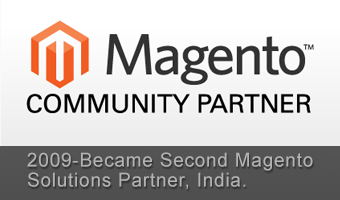by Reji K Paul (Software Programmer, Excellone Technologies)
The technology of J2EE development is a standard platform for developing distributed transactional applications, which provides a component-based approach to the design, development and deployment of enterprise software applications. It ensures the high availability, scalability and maintainability of software applications built over J2EE technology.
The J2EE development platform with its ability to reuse the components offers a multi-tiered distributed application model, which provides for XML based data interchange. Along with serving as a security model it provides flexible transaction control.
The J2EE development platform consists of 3 tiers.
- Client Tier – Contains Web clients and applications client that are executed by the users. The Web clients consist of dynamic web pages with various mark up languages and a web browser that renders the web pages received from the web server. As it is a thin client, heavy weight operations like queuing the databases, connecting to legacy web applications etc. are off-loaded to the enterprise beans executing in the J2EE. Client tier communicates with the web server over the HTTP protocol using Servlets, JSP etc. Application Client interactions with a distributed system can be heavy or lightweight, based on the quantity of business processing that is performed on the local client.
- Business Tier – The enterprise Java beans, the core component in Business logic of J2EE applications, solves or meets the needs of a particular business domain such as banking, retail etc.
- Enterprise Information System Tier (EIS) Consists of enterprise resources like database systems, legacy applications and ERP applications.
JMS and JNDI are other web related technologies. JMS (Java Messaging Service) enables software application to interact with each other transferring messages. JNDI (Naming and Directory Services) is used to structure items needed to make available to distributed programs. It facilitates looking up, searching, and binding features to their clients.
J2EE development has the following plus points that make it popular in the fast paced world of information technology.
- Portability and scalability.
- Simplicity and long term viability.
- Scalability and legacy integration.
- J2EE is collaborated with leaders throughout the enterprise software arena.
- Flexibility to implement a wide variety of existing enterprise systems.
- Encapsulates the layers of functionality in specific types of components.
The J2EE application model divides enterprise applications into 3 fundamental parts:
- Components, the key focus of application develops while system vendors implement containers and connectors to conceal complexity and promote portability.
- Containers intercede between clients and components providing services transparently to both, including transaction support and resource pooling.
- Connectors sit beneath the J2EE platform and define the portable service API has to play in existing enterprise vendor offerings. They promote flexibility by enabling a variety of implementations of specific services.
The technology of J2EE development simplifies enterprise applications by basing them on standardized modular components by facilitating a complete set of services to those components and by handling many details of application behavior automatically without complex programming.








Warning: Undefined array key "comment_error_msg" in /home/dh_u5m5hd/itoutsourcingindia.com/blog/wp-content/themes/itoi/comments.php on line 75